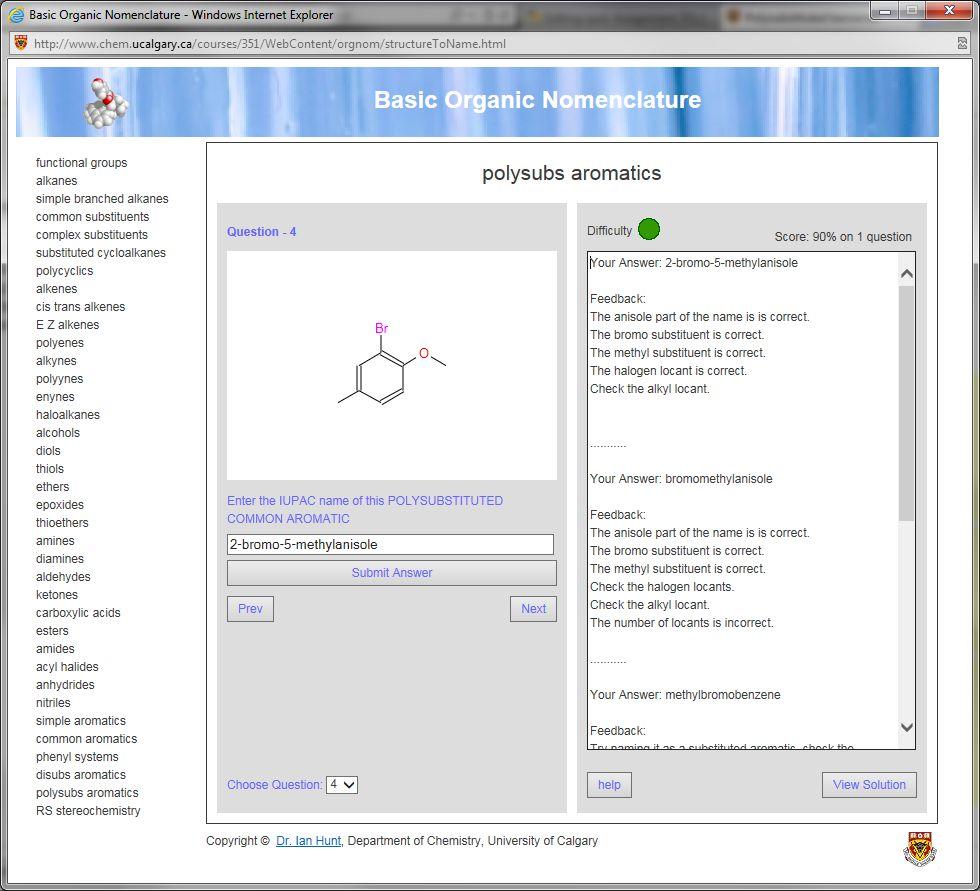
Software designer Ron Dutton, left, and Department of Chemistry senior instructor Ian Hunt.
Riley Brandt, University of Calgary

Software designer Ron Dutton, left, and Department of Chemistry senior instructor Ian Hunt.
Riley Brandt, University of Calgary
When browser updates cut off student access to valuable online learning tools for a popular course in January this year, Ian Hunt, a senior instructor in the Department of Chemistry, saw the situation as an opportunity to redesign the tools, making them more interactive, and engaging for students.
Approximately 700 students take Organic Chemistry (CHEM 351) every year, most of them aspiring to a career in health care. Online assessment tools were first developed eight years ago for the course to help students practise the naming of organic molecules and how to identify them by their spectra. In January, a security update to Internet Explorer and other browsers effectively broke these tools by no longer allowing them to be easily used on students’ computers.
“Quick patches were devised to get us through the semester, but after several discussions and some consultation we decided a permanent solution was needed,” explains Hunt. “We realized that the learning object tools — Basic Organic Nomenclature and Interactive Spectroscopy — needed to be rewritten using JavaScript to avoid similar problems in the future. We also decided to use this opportunity to redesign the tools, making them more interactive.”

The Basic Organic Nomenclature learning tool runs students through practice naming drills.
Designing flexible learning tools
The Department of Chemistry and Faculty of Science provided matching funds to the project, making way for the hiring of Ron Dutton, a computer programmer. His first task was to familiarize himself with the subject matter. “The only chemistry course I took was in 1984 so I had to ask Dr. Hunt lots of questions during the design phase,” says Dutton. “This was a challenging project but I think we’ve come up with elegant solutions.”
One of the main changes involved designing the programs to provide students with constructive, guiding feedback instead of basic ‘correct/no, try again’ responses. Another was ensuring both programs were small enough so when they were running in students’ browsers, it wouldn’t be a slow experience.
“We designed both learning tools to be flexible so we can easily add common wrong answers to the question files and adjust the feedback as needed,” adds Dutton. “The interface is also separate from functionality so the tools can be more easily adapted to new devices in the future.”
Open access to the broader educational community
It was very important to Hunt that — as with the previous versions — these new learning tools be accessible to anyone interested in the topic. As a result, students don’t have to be enrolled in the CHEM 351 or even the University of Calgary to benefit.
The Basic Organic Nomenclature website went live in September with Interactive Spectroscopy coming soon. “Since Sept. 1, the nomenclature site has already had over 10,000 hits from 110 countries. With both sites, we’ll track the number of visits and other details like how many questions students try and what browser they’re using,” says Hunt. “With the flexibility that’s been designed into these new tools, we’ll be able to adapt and improve them, benefiting our CHEM 351 students and other learners worldwide.”